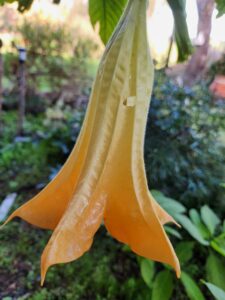Discover the Witch’s Garden at Chestnut Brae
Plants have been around longer than humans and once we arrived on the planet we used plants to keep us alive and help us prosper. In medieval times people who tended the garden were often called witches. The word “Witch” may be associated with “Evil” but witches used plants for feeding their family, keeping them healthy and keeping evil spirits away. These witches were wise people.
Join this Witch’s garden tour at Chestnut Brae and discover the folklore and traditions that revolved around these ancient plants.
What is a Witch’s Garden ?
A witch’s garden is more than a garden of attractive plants. It is a garden that can be used in everyday life. A garden where very plant has purpose and a use. Many of these plants are supposed to have magical properties, but this has got blurred as the years have progressed and science has proven that these plants actually do have a purpose.
Why did Witch’s Garden appear?
Women were once the prime gardeners and their responsibility was to keep their family healthy and safe. Plants were used to achieve this goal. Women who lived on the margins of society were often called “witches” and associated with the devil ,the witch eventually got a bad name in history
What is the Witch’s Garden at Chestnut Brae
The garden at Chestnut Brae was established 50 years ago and this has allowed the plants to settle into their environment. The garden is European in flavour and contains many of the plants witch’s would have used in their gardens.
What does a Witch’s Garden Tour consist of? This one and half hour garden tour takes you on a walking tour of the garden at Chestnut Brae with John Stanley looking at plants from a folklore perspective. How these plants were used in the garden and why.
This one and half hour garden tour takes you on a walking tour of the garden at Chestnut Brae with John Stanley looking at plants from a folklore perspective. How these plants were used in the garden and why.
We discover plants used in medicine, those used to keep evil spirits away, plants that created superstition as well as plants that are looked on as medicine and plants of hope.
Here is a sneak peak at some of the plants and their story:
Brugmansia
Angels Trumpet belongs to the Solanaceae family and like many of their relatives are poisonous. This plant originated in South America and shamans in the Andes used them as herbal medicine.
Helleborus
It is the roots you need to treat with respect on this plant as they can be a poison. Folklore mentions that a simple girl wanted to visit Jesus and had no gift An angel touched the ground and a Christmas Rose of Hellebore appeared.
Rose

The rose has many folklore traditions associated with it. Piny the Elder could not decide whether England, Albion, was named after the white Cliffs of Dover or the rose that grew in the wild. Cleopatra seduced Mark Anthony on a bed of roses. Turkish Delight flavouring includes rose whilst Damask roses were used for cherry pies.

